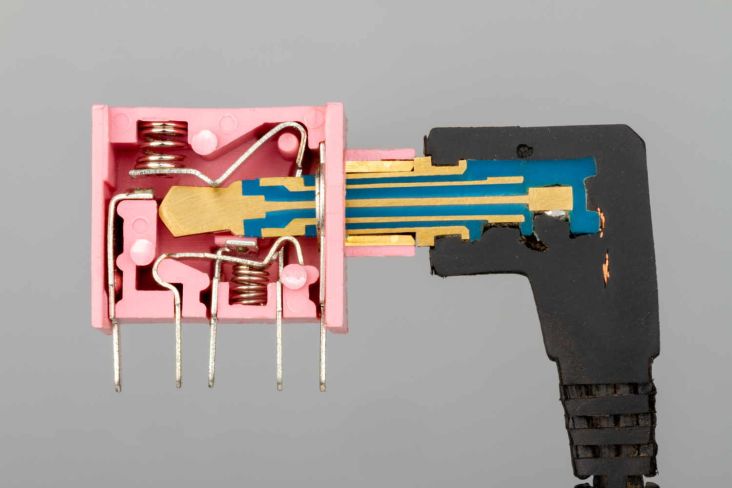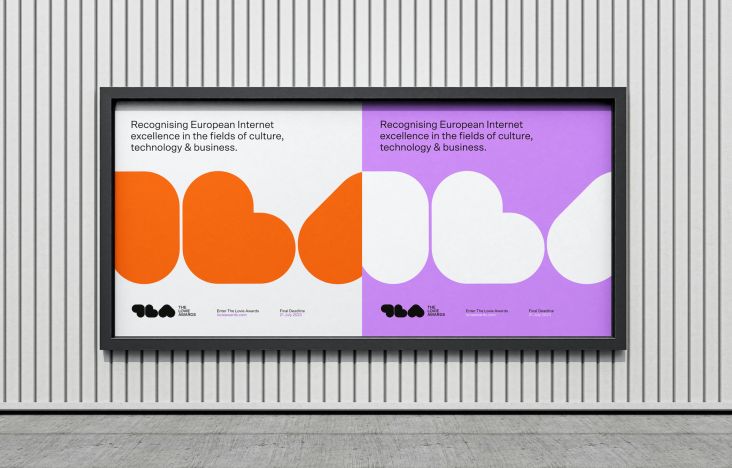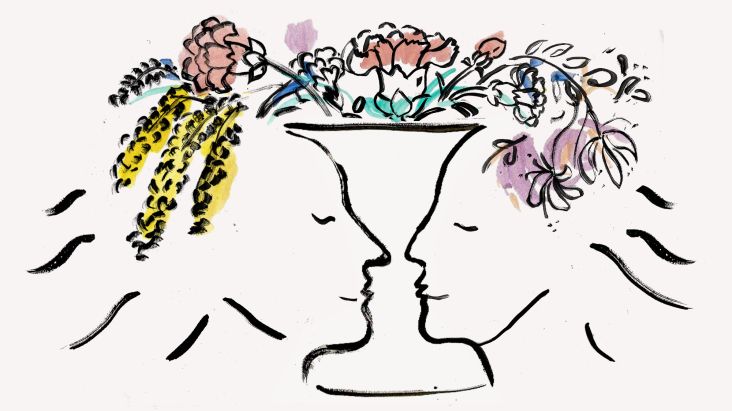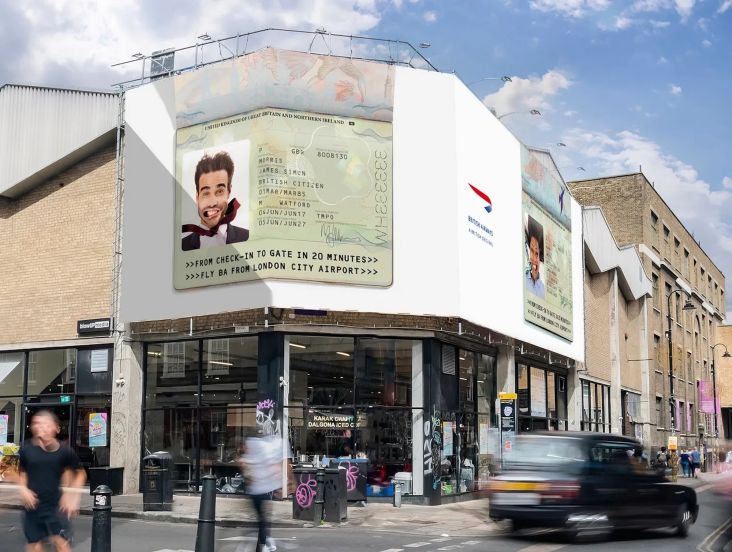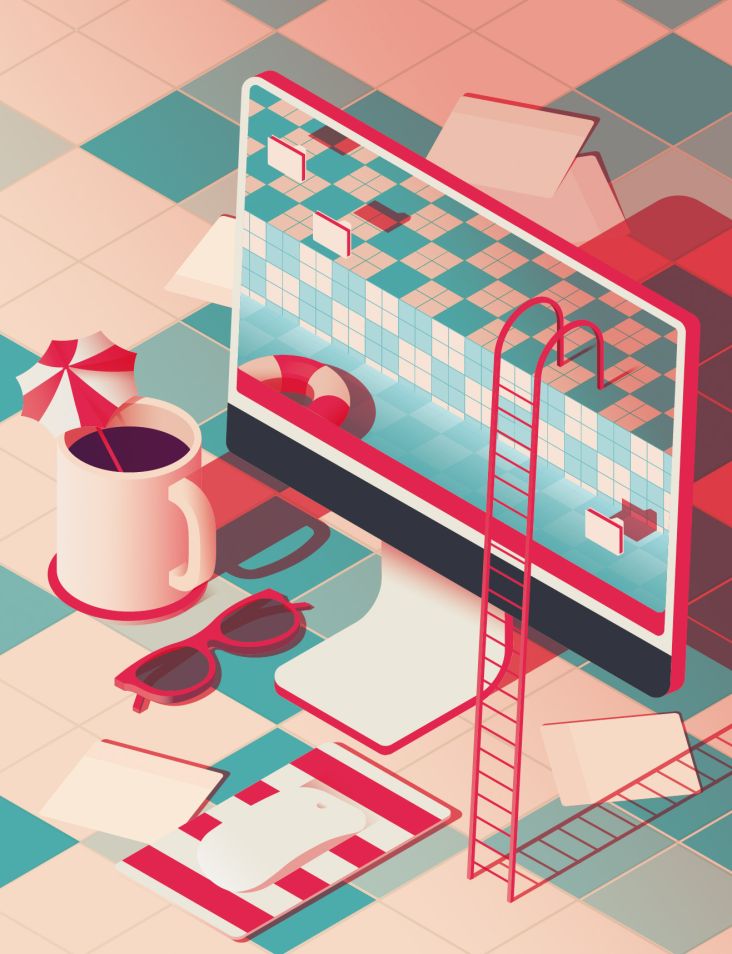Roman Klonek creates a funny sense of strangeness in his imperfect woodcut prints
Düsseldorf-based Polish illustrator Roman Klonek delights in creating absurd characters and strange situations in his vibrant series of charmingly imperfect woodcut prints.
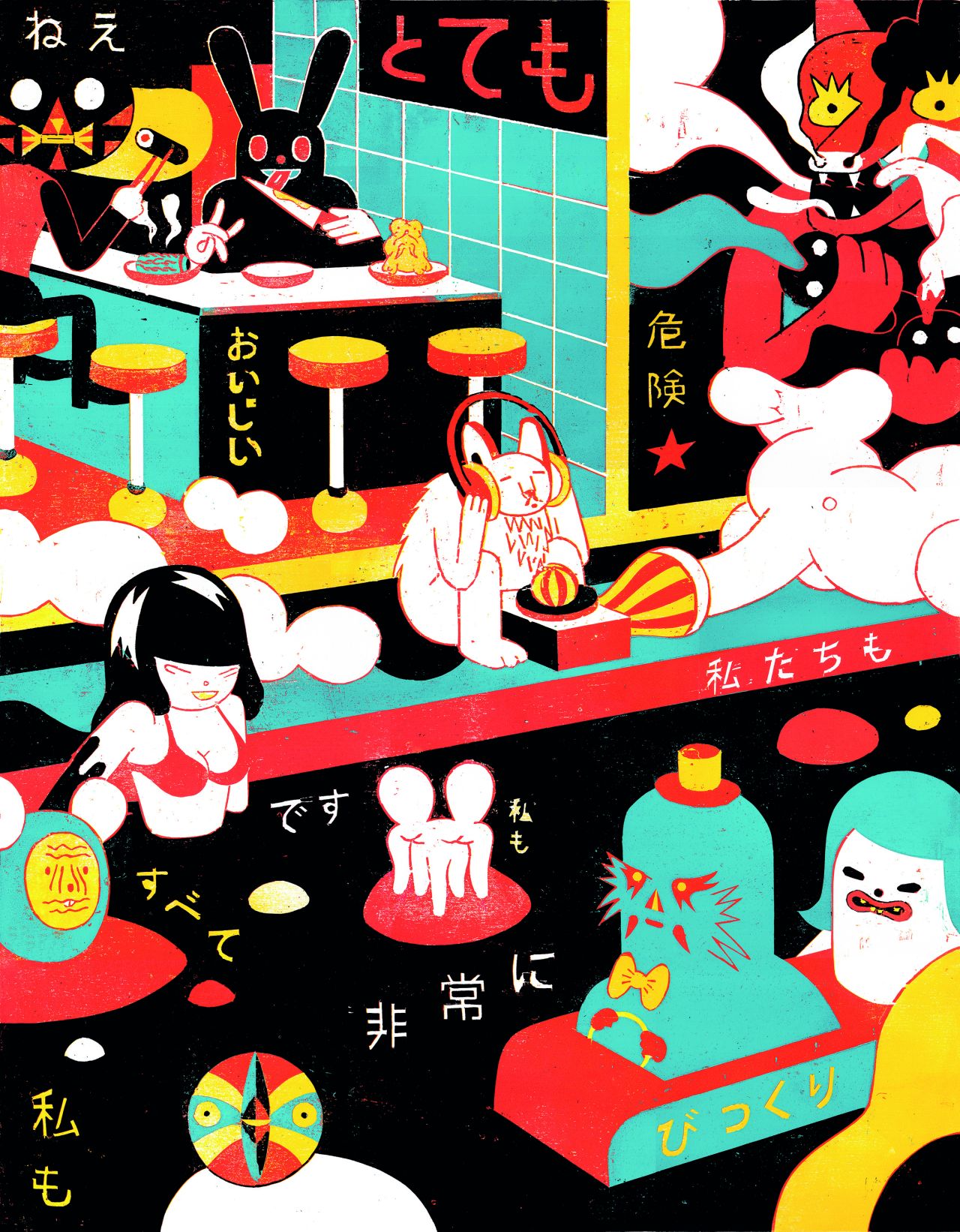
Chaos seems to be at the heart of Roman Klonek's art and career. His woodcut prints that depict whimsical creatures living through bizarre scenarios lean into the inherent imperfections of the medium, and even his decision to move into the art world came about through luck and accidents.
After studying visual communications in Düsseldorf, Roman explains that he teamed up with a few friends to found their own studio/gallery space in a disused shop. "So, we got the chance to exhibit in our own gallery," he tells Creative Boom. "Often accompanied by live music, readings, and other performances by people we found interesting. It was a funny entry into the art world."
However, this DIY approach paid off as Roman, and his friends, soon became known to city locals and beyond. Other galleries invited them to exhibitions, and a natural, widening ripple effect unfurled.
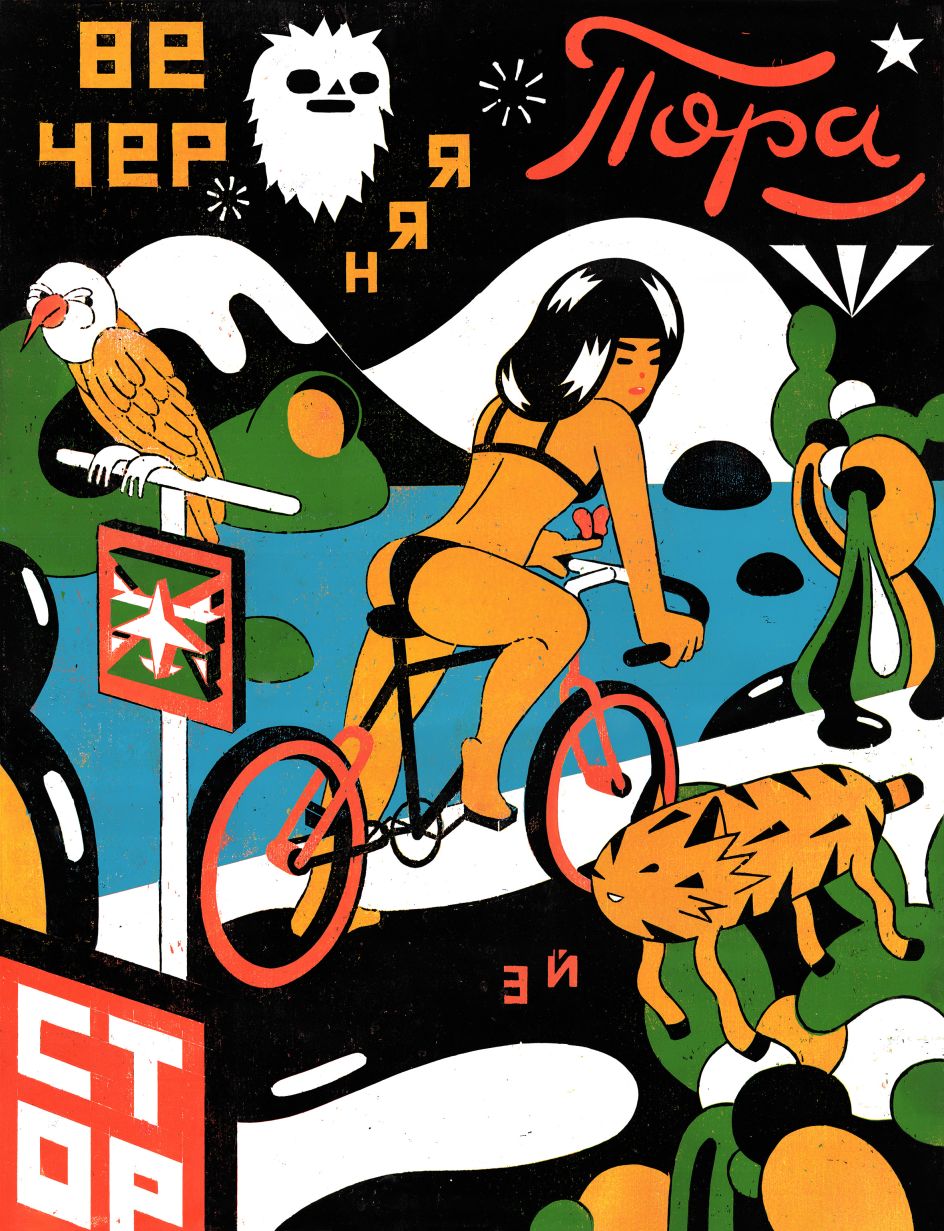
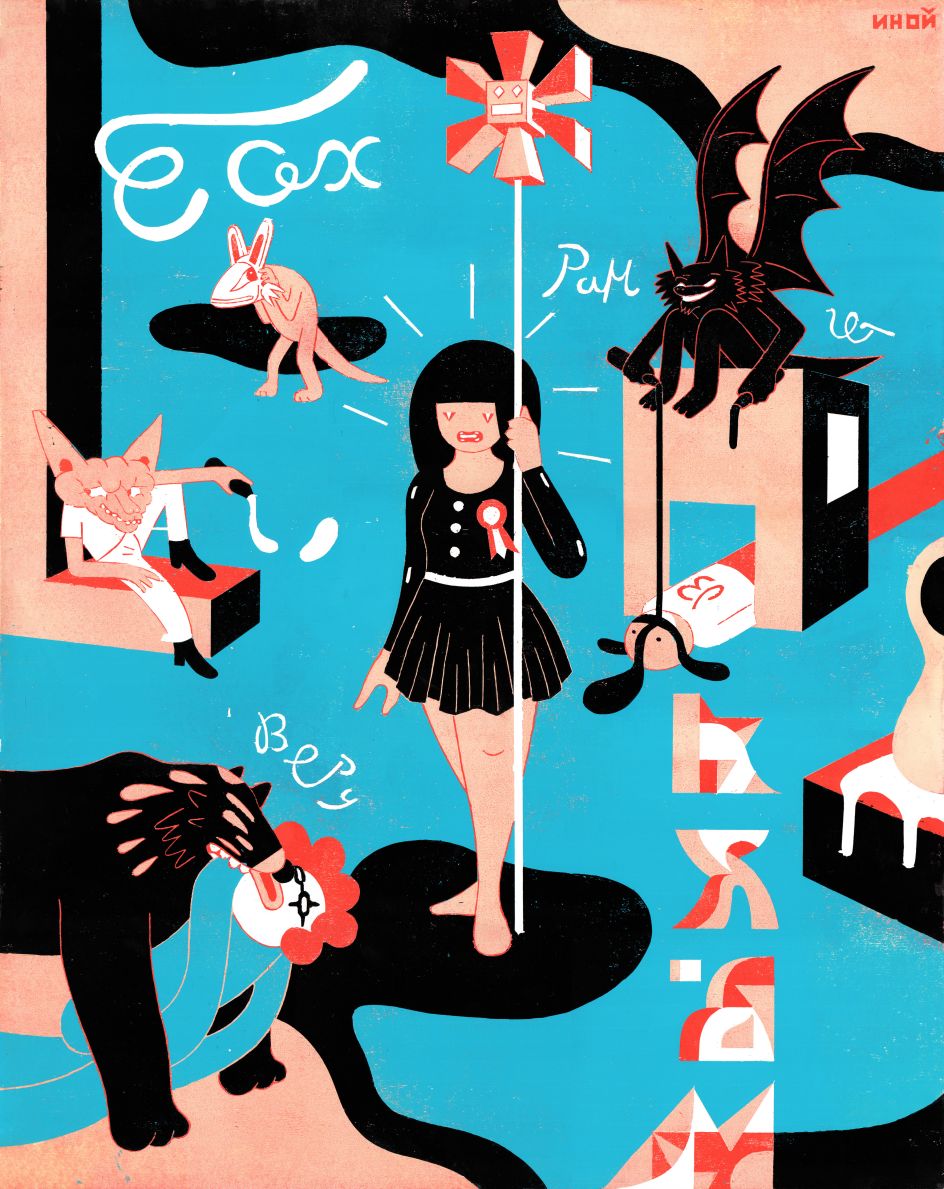
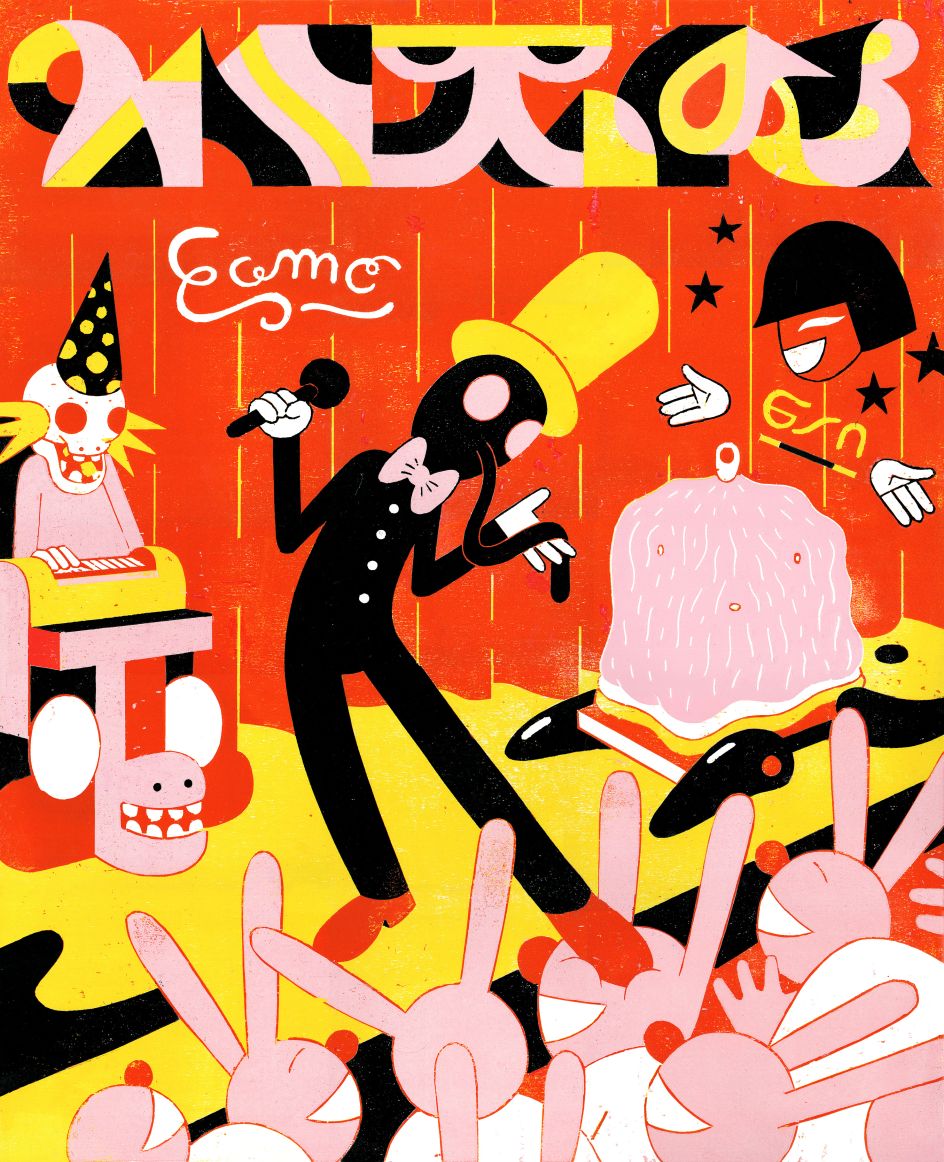
But the strength of Roman's work should not be overlooked. Vibrant, strange and entirely individual, his woodcut prints are a delight to behold and have been refined over 20 years. Having discovered the medium during his studies, Roman quickly knew he had found his passion.
"For me, it's still a good way to get a bit more out of a drawing," he explains. "Typical woodcuts have an aura of seriousness about them, so I have the impression that I'm shifting my drawings when I carve them. I like to counteract this with my motifs, which often come from the comic and cartoon world."
Another thing that appeals to Roman about woodcut prints is that they look charmingly outdated. "It's wonderful to do something analogue and manual in the digital age," he explains. "All analogue media has these little natural flaws; for me, this becomes a field of artistic experimentation.
"The flaws add an extra appeal. They are a guarantor of authenticity. Each piece has its own small blemishes and is, therefore, always an individual, a one-off. Besides this, wood – in my case, mainly poplar – is a lovely material to work with. It looks, feels and smells wonderful."
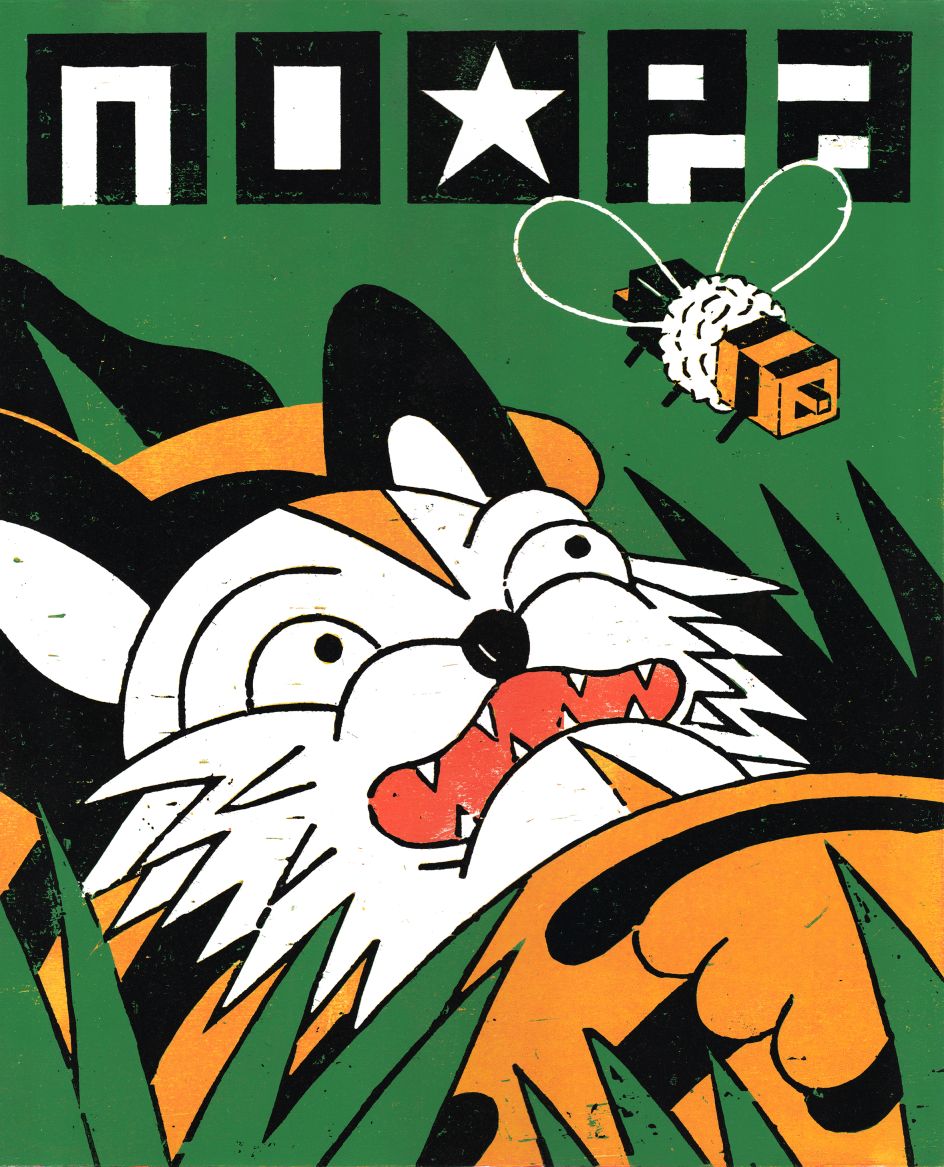
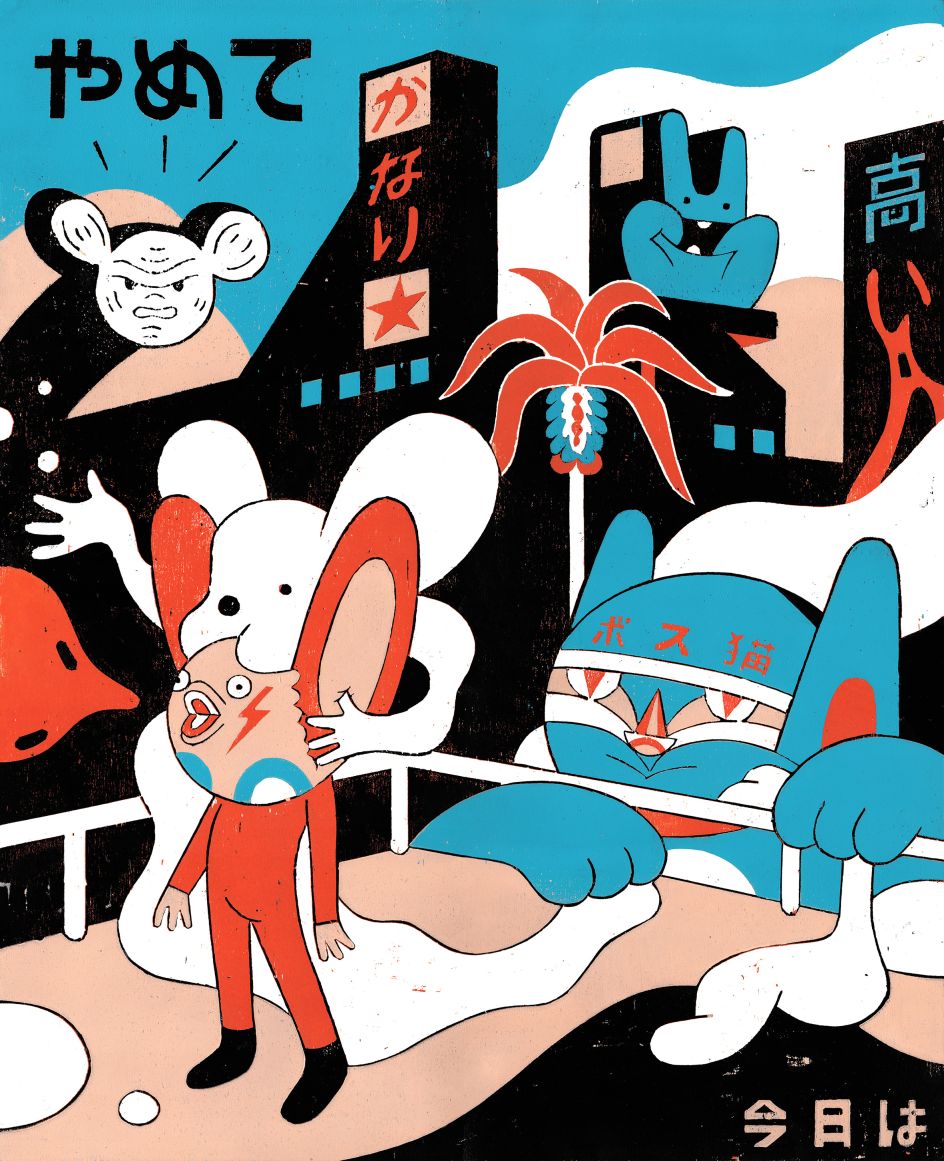
The prints are only part of Roman's creative output. He claims to fill four sketchbook pages daily, generating ideas for his woodcuts and playing around with images until they fit. "Usually, I have no story in mind while I draw," he says. "Quite the contrary. I try to think of nothing and let my hand go. They're like unintentional scribbles you do during a telephone call."
Roman says this approach is crucial when finding a good rhythm and melody in his line work. He can always look back over his work and detect an unusual line shape later. "The trick is to create masses of material," he reveals. "Ninety per cent of it is rubbish, but it's necessary to get to that interesting 10 per cent. This interesting material can be an unusual shape I can use as a nose, eye or body later."
Roman then transforms these elements into vector graphics so that they are easier to handle; then, he sets about combining them until characters arise. Sometimes these elements even tell a story on their own accord, a snapshot where he can imagine an action both before and after it.
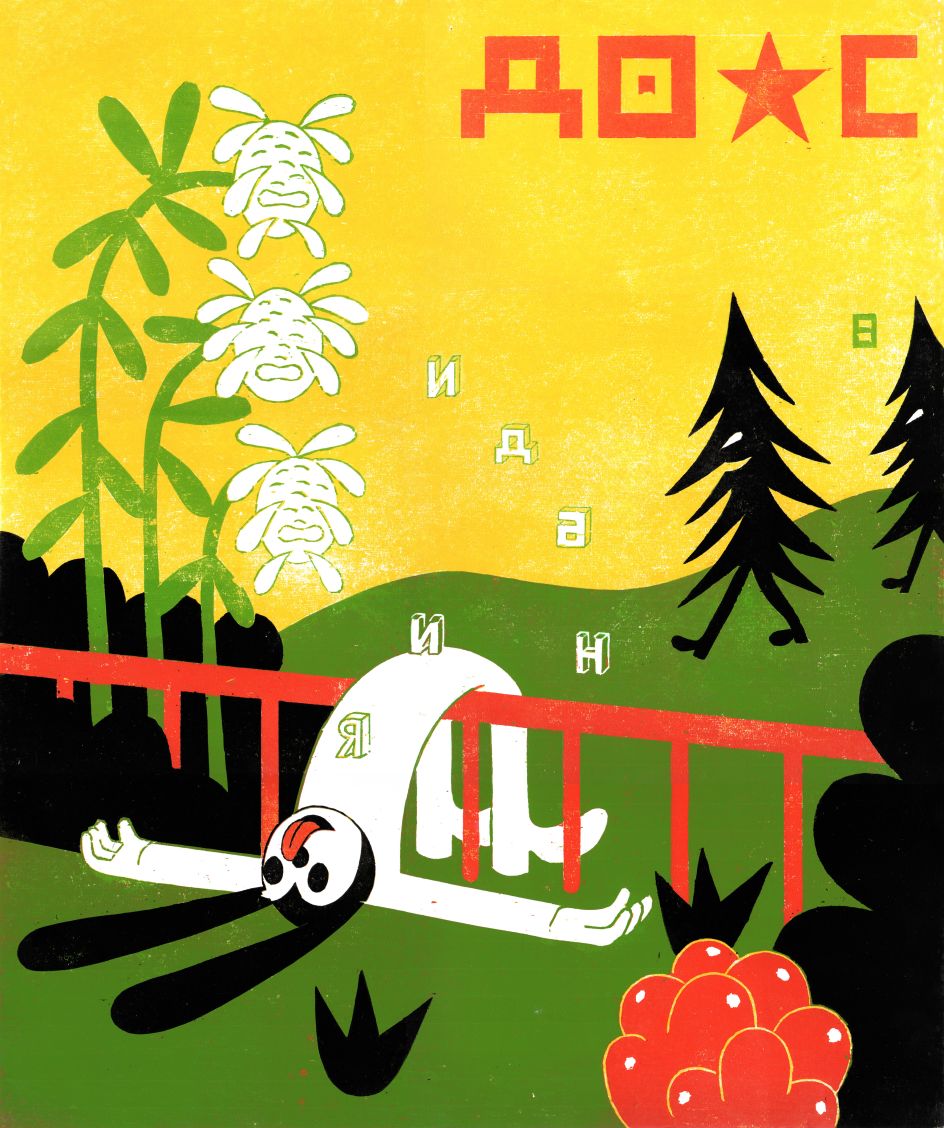
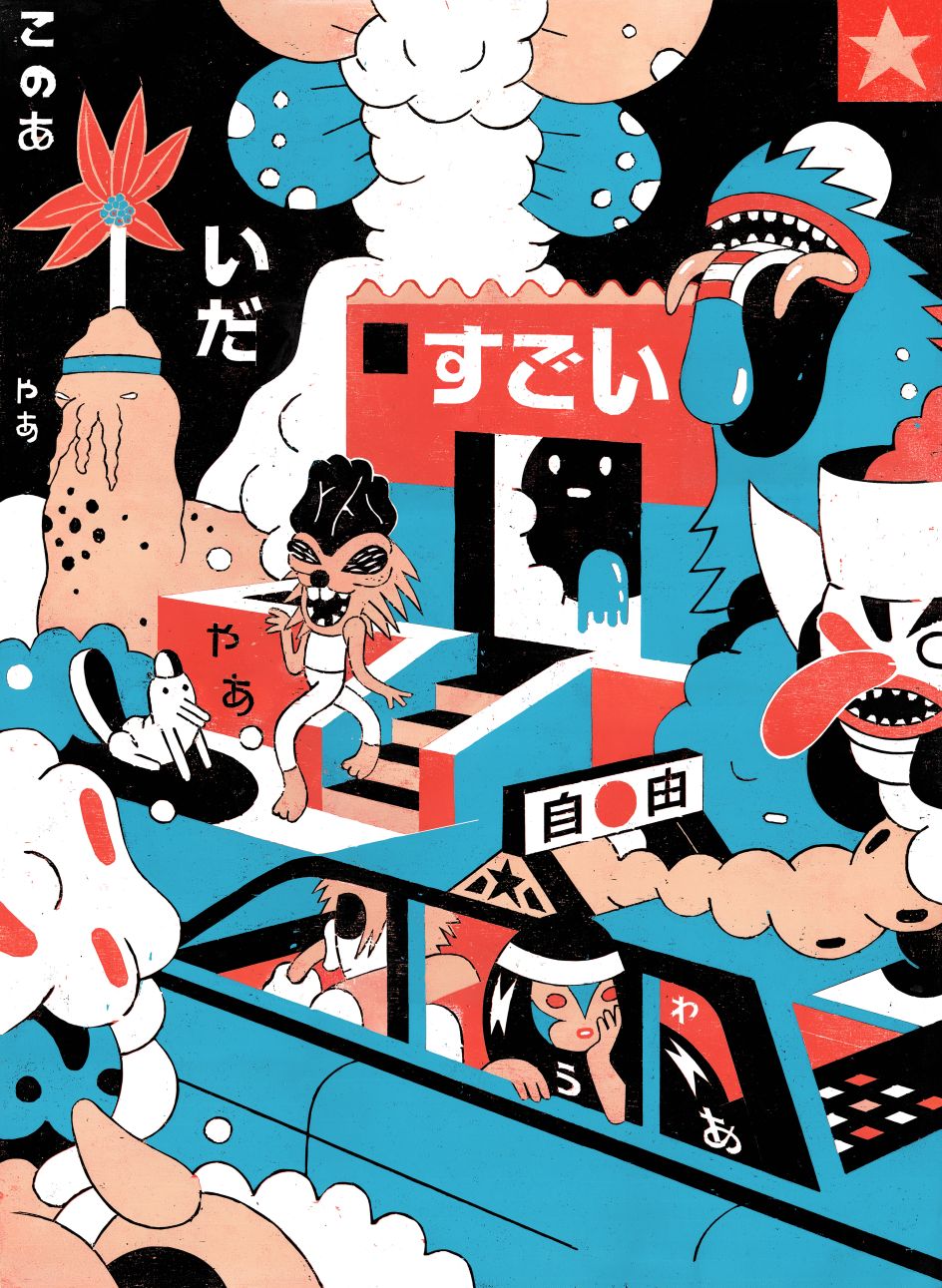
Once these ideas are refined, and a draft has been prepared, a mirror-inverted version is transferred onto a piece of wood. During this process, Roman has to anticipate working with a reduced cut, which means gradually printing all of the colours with a single plate.
"At the beginning, I cut out all of the areas that should remain white," he explains. "Then I print the first colour; then all areas are cut out on which the first colour should remain. It goes on and on until finally; there are only the areas on the plate onto which the last colour can be printed, which is usually mostly black.
"It is, of course, also possible to carve an extra plate for each colour, but reducing a plate is less work than cutting a new one for every colour. The only disadvantage is that the number of prints is set after the first session. But that can also be seen as an advantage because, in a way, I can offer a certain exclusivity.
"There are (mostly) only eight woodcuts in an edition. It's impossible to increase the edition later. And every single one has its own little mistakes due to the application of paint or the wood grain. Moreover, this is a very nice way for me to dive into a state of high concentration. Every carving error is difficult to correct. It feels good because this focus is a kind of meditation."
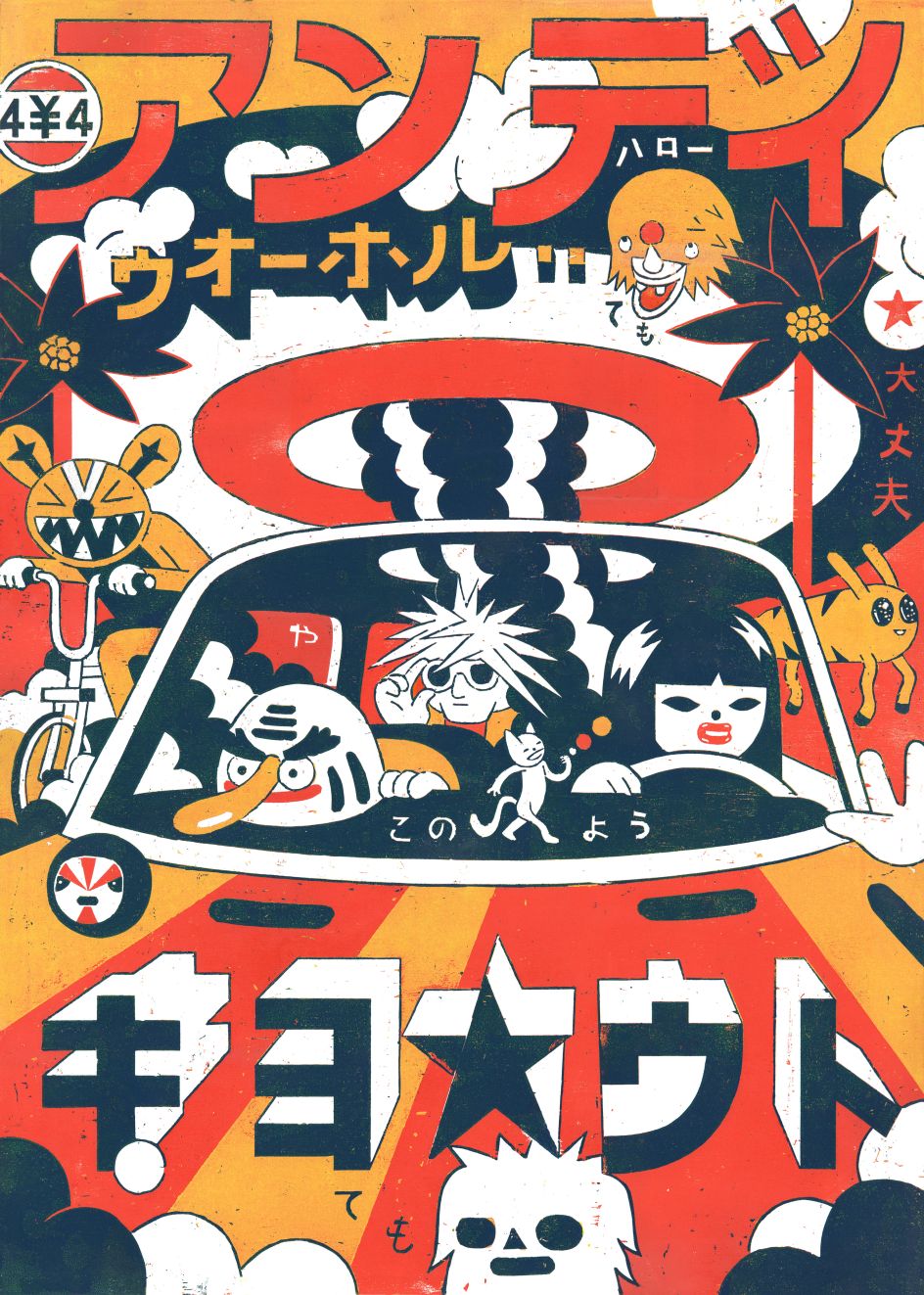
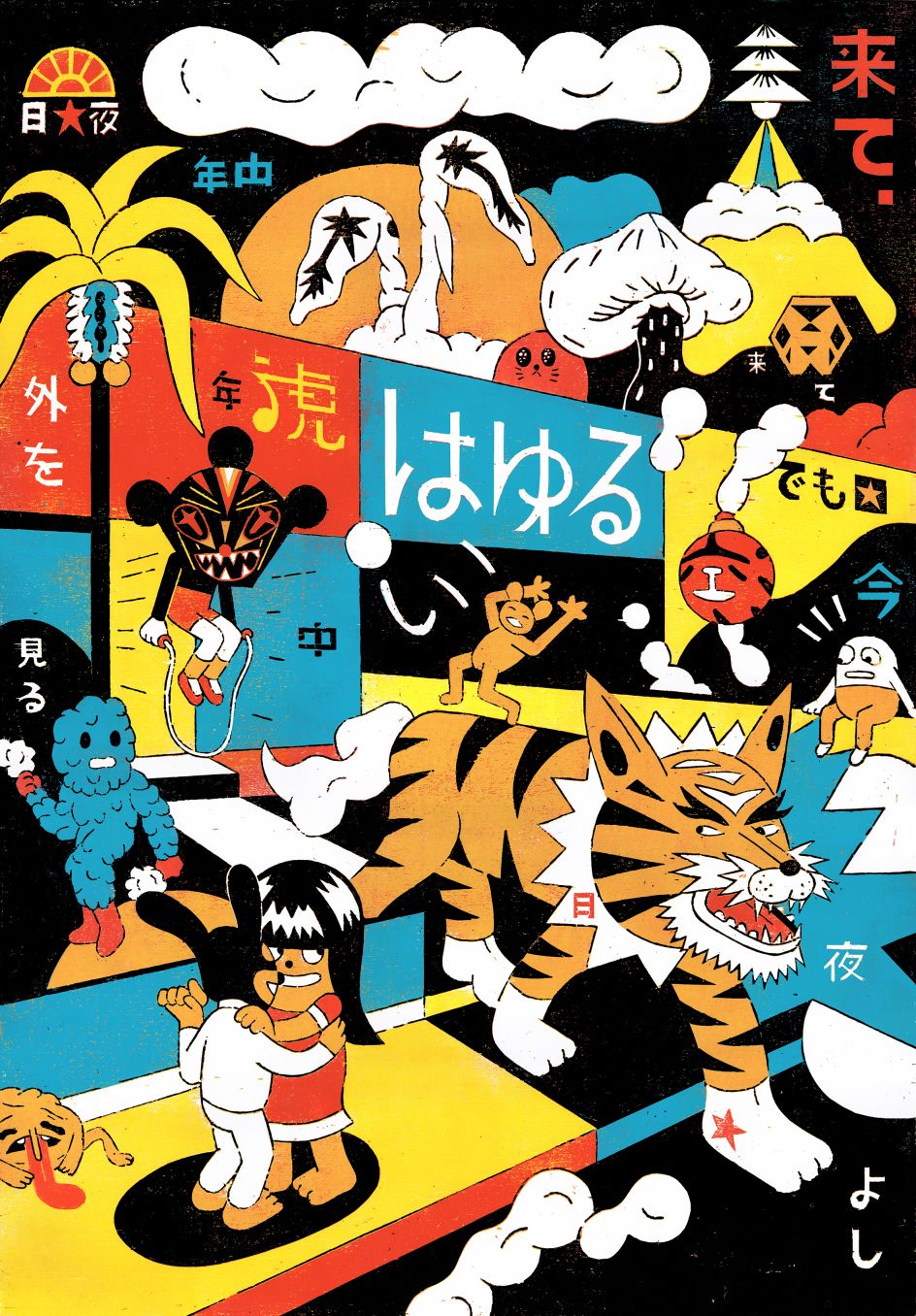
A recurring element in Roman's woodcut prints is a strong Japanese influence. This style evolved from his love of Japanese pop culture, especially anime and cartoons. And some years ago, he even visited the country for a month. "I discovered a special kind of strangeness that became very attractive to me," he says. "Being unable to read the signs on the streets made me feel forsaken, and it turned out that I liked that feeling. I felt lost in a good way. And it became a goal of mine to put this mood into one of my pictures."
This ability to find beauty amid incomprehension feeds into how Roman designs characters. Thanks to a little alteration, he can turn familiar imagery into something strange. "It's easier to get attention with confusion. People are curious, and they want to solve riddles, myself included. When creating compositions, it's important not to make either obvious or absurd connections. My goal is to find this fine line between the two."
Rounding off Roman's unique style is his interest in propaganda and advertising. He feels that the two often overstate the benefits of a way of thinking or a product, yet somehow we are all often prone to this. Some people are longing for something big and beautiful," he concludes. "For greatness and magnificence.
"So, for an artist, it's a nice game to pick up the stereotypical modes of expression and revise them in another context. Really a lot of things are worthy of being exposed and ridiculed. Or at the least, they should be turned into something strange."


















